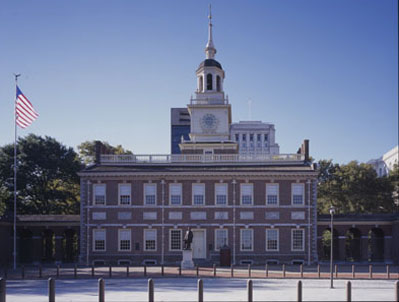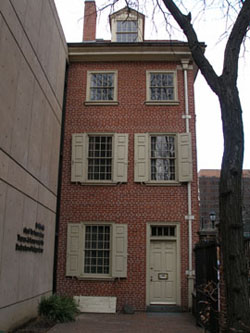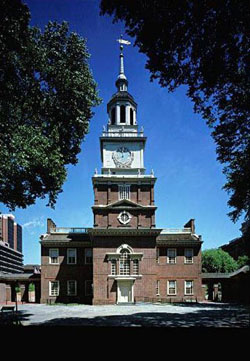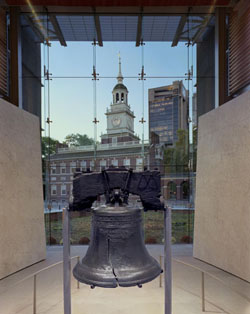
Parks accessible for disabled visitors
Disability is not an obstacle for people who want to enjoy what our national parks have to offer.
From the tallest mountain on the U.S. Atlantic Coast to the core of the country and our nation’s Capital, the parks are accessible for everyone.
Although most of the national parks showcase mountains, caves and historical buildings, which are centuries old, the opportunities for a person with a disability are there to enjoy.
| Click on the video at the right to view an audio slideshow about disabled accessibility in national parks prepared by writer Emma Reyes. |
The National Park Service offers disabled visitors a range of choices to enjoy what our parks have to offer.
One park that can be experienced with ease is the National Mall in Washington, D.C.
According to Bill Line, spokesperson for the National Mall, access is easy.
“The National Mall is fully accessible to anyone in a wheelchair,” he explained.
The Washington National Monument, for example, is completely accessible for a person in a wheelchair to experience.
“The elevators hold approximately 25 to 30 people,” said Line.
| The North side of the Independence Hall, part of Independence National Historical Park in Philadelphia (Photo by Robin Miller, courtesy of the National Park Service). |  |
The Independence National Historical Park in Philadelphia is another fairly accessible park, according to the online guide and Adam Duncan from the public affairs office.
“All our buildings are accessible for wheelchairs,” said Duncan.
Although access is limited in some places, people in wheelchairs can access most of the structures with no difficulty.
“We offer full exhibit books and photos albums of the second floor at Independent Hall,” added Duncan about the adjustment made to accommodate people in wheelchairs.
The parks not only accommodate people in wheelchairs — people with other disabilities such as blindness or deafness can enjoy the parks, too.
 |
At left, Declaration House in Philadelphia (Photo courtesy of the National Park Service). Below, the south side of the Independence Hall (Photo by Robin Miller, courtesy of the National Park Service). Last below, the Liberty Bell in Liberty Bell Center (Photo by Robin Miller, courtesy of the National Park Service). |
At Independence National Historical Park, rangers can provide verbal information about the park. For those with impaired vision, some areas of the park are setup with large-printed park folders.
The park also provides services that allow those who suffer from deafness to experience the park.
“We also offer American sign language with advance notice,” said Duncan.
Duncan also mentioned that feedback is key to improving accessibility in the park.
“We are always looking to better the experience with feedback from visitors comments,” he explained.
 The full accessibility guide can be accessed online at http://www.nps.gov/inde/upload/accessibility.pdf.
The full accessibility guide can be accessed online at http://www.nps.gov/inde/upload/accessibility.pdf.
These are just a few examples of up-to-date historical buildings in the country that are available to everyone to enjoy.
Acadia National Park located in Maine has accessible trails, especially for a person in a wheelchair. Carriage roads include Eagle Lake and Bubble Pond which, according to Park Ranger Wanda Moran, is the main route if in a wheelchair.
“We have many more than 15 trails here, but the carriage roads being mainly the ones that are accessible,” Moran said in an e-mail.
The carriage roads are broken stone packed down paths that are used for walking, biking and horseback riding. The carriage roads lead to Eagle Lake, which leads to three ponds, Breakneck Pond, Half Moon Pond and Witch Hole Pond.
The other road is Bubble Pond and it accesses the carriage roads, which does not limit accessibility until past the pond. Both of the roads have accessible parking and restrooms.
Samantha Richardson, of the Denver Service Center, National Park Service, explained two specific challenges in the national parks: natural barriers and historic buildings and structures. These are accommodated to the best of the park’s ability.
“With natural barriers, site topography often causes challenges in grading or others means of accommodation with meeting accessible route requirements, especially in areas with cultural landscapes, significant natural areas, hardened geologic areas,” Richardson said in an e-mail.
She added, “With historic buildings and structures, the challenges can vary greatly, but often for accessible route accommodations including doorways (e.g., narrow doors and thresholds), restrooms, interior use spaces (exhibit, viewing, concession, information) [and] multiple floors.”
“Local and state historic preservation offices are always involved with any historic building/structure that is modified to accommodate accessibility
requirements” she explained.
 Tennessee resident J.P. Barmers, a person in a wheelchair and paralyzed from the chest down, has experienced one of the national parks with little problems.
Tennessee resident J.P. Barmers, a person in a wheelchair and paralyzed from the chest down, has experienced one of the national parks with little problems.
“The bathrooms are accessible and me, being in a manual-chair, I was able to go on some trails and campgrounds in Yellowstone National Park. I am more able to [go] through jagged roads,” said Barmers.
The National Park Service also offers a discount option called the Access Pass. This pass can be obtained for free to U.S. citizens and permanent residents with a permanent disability.
The Access Pass offers a 50 percent discount on some fees charged for facilities and services, which include camping, swimming, boat launching and specialized interpretive services. However, the pass doesn’t cover or reduce the special recreation fees or fees charged by the concessioners of the parks.
To obtain the application online go to http://store.usgs.gov/pass/access_pass_application.pdf. The processing cost for obtaining the pass by mail is $10. This is a lifetime pass and the application can also be obtained in person from a federal recreation location.

Comments are Closed